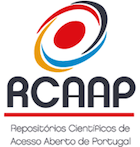Protocol of Performance in Premature Newborns: Reality in the Faro´s Hospital
DOI:
https://doi.org/10.25759/spmfr.237Keywords:
Child Development, Clinical Protocols, Infant, Low Birth Weight, Premature, Motor Skills Disorders/ prevention & control, Psychomotor PerformanceAbstract
Introduction: Our objective is to let know the Protocol of Performance in Prematurity that has been in use a Central Hospital since September 2014.
Methodology: The protocol begins before discharge from the Neonatal Intensive Care Unit (NICU) with a neuro-motor evaluation by pediatric rehabilitation physician and neurodevelopment therapist: (1) Individual therapy: < 29 weeks of gestation or ≤1500 g or neurological disorders and / or potential risks for a non-normalized psychomotor development; (2) Orientation group of preterm newborns: 29- 34 weeks of gestation and > 1500 g. The orientation group is conducted at the Hospital in 5 sessions (after discharge at 3, 6, 9 and 12 months corrected age), under the guidance of a multidisciplinary team and focusing on psychomotor development and the relationship parents/caregivers-baby.
Results: From September 2014 until the end of 2016, a total of 26 groups were selected, with an average of 6 infants per group, making a total of 145 infants, 42 of whom entered into an individual intervention program at some time of follow-up in the prevention program. The losses (by refusal, change of residence or abandonment) were zero in 2014, six in 2015 and three in 2016.
Discussion: The majority of the studies carried out to date use an intervention methodology in preterm newborns infants in the home environment, under the guidance of only one professional, focusing only on psycho-motor development and with a weekly and / or monthly observation frequency up to 2 years of life. The main conclusion of all the studies reflects that there are no significant differences in motor outcome in babies with and without preventive intervention. However, they do not focus their evaluation on minor motor deficits (prevalence of about 50%), nor on the capacity for functional modification / re-structuring and social participation.
Conclusion: Our protocol follows the follow-up guidelines for risky newborns, but differs from the protocols of scientific studies carried out. It is intended, in the future, to evaluate in a structured way, with developmental scales, the psychomotor outcome of these babies.
Downloads
References
Vohr B, Wright L, Hack M, Aylward G, Hirtz D. Follow up Care of High Risk Infants; Pediatrics 2004;114;1377-97.
Marecos C, Oliveira A, Figueriedo H, Cadete A, Cunh M. Fatores Preditivos de Aderência dos Pais a um Programa de Seguimento de Crianças Nascidas de muito baixo peso. EssFisiOnline 2011. Vol 2, No 1.
Nair MKC, Jain N. The High Risk Newborn. 1st Edition;207-208,231-235.
Chaudhari S. Learning problems in children who were "high risk" at birth. Indian Pediatr; 1994;31:1461-64.
Giannì ML, Picciolini O, Vegni C, Gardon L, Fumagalli M, Mosca F. Twelve-Month Neurofunctional Assessment and Cognitive Performance at 36 Months of Age in Extremely Low Birth Weight Infants. Pediatrics; 2007;120:1012-9.
Pandit A; Mukhopadhyay K, Suryawanshi P. Follow up of High Risk Newborns. NNF Clinical Practice Guidelines. 2014.
Salt A, Redshaw M. Neurodevelopmental follow-up after preterm birth: follow up after two years. Early Human Development; 2006; Vol 82: 185-197.
Michael J, Guralnick MJ. Preventive Interventions for Preterm Children: Effectivenes and Developmental Mechanisms. J Dev Behav Pediatr; 2012; 33(4): 352-364.
Guralnick MJ. Why early intervention works: A systems perspective. Infants Young Child; 2011; 24:6–28.
ALS H, Gilkerson L, Duffy F, Mcanulty G, Buehler D, Vandenberg K et al. A three-center randomized, controlled trial of individualized developmental care for very low birth weight preterm infants: medical, neurodevelopmental, parenting and caregiving effects. Developmental and Behavioral Pediatrics; 2003; Vol 24: No 6.
Ottenbacher KJ, Biocca Z, DeCremer G, Gevelinger M, Jedlovec KB, Johnson MB. Quantitative analysis of the effectiveness of pediatric therapy. Emphasis on the neurodevelopmental treatment approach. Physical Therapy; 1986; 66: 1095–101.
Blauw-Hospers C, Hadders-Algra M. A systematic review of the effects of early intervention on motor development. Developmental Medicine and Child Neurology; 2005; 47: 421–32.
Doyle LW, The Victorian Infant Collaborative Study Group. Evaluation of neonatal intensive care for extremely low birthweight infants in Victoria over two decades: I. Effectiveness. Pediatrics; 2004; 113: 505–9.
Bhutta AT, Cleves MA, Casey PH, Craddock MM, Anand KJ. Cognitive and behavioral outcomes of school-aged children who were born preterm: a meta-analysis. JAMA; 2002; 288: 728–37.
Pedersen SJ, Sommerfelt K, Markestad T. Early motor development of premature infants with birthweight less than 2000 grams. Acta Paediatrica 2000; 89: 1456–61.
Thelen E, Smith L. A Dynamic Systems Approach to the Development of Cognition and Action. Cambridge: MIT Press, 1996.
Becker P, Grunwald PC, Brazy JE. Motor organization in very low birth weight infants during caregiving: effects of a developmental intervention. Developmental and Behavioral Pediatrics; 1999; 20: 344–54.
Oliveira A, Cunha M, Ferreira L, Figueirado H, Cadete A, Machado M. Cuidar para o desenvolvimento – intervenção no recém nascido pré termo de muito baixo peso. EssFisiOnline; 2008; Vol 4, No 2.
Spittle A, Orton J, Doyle L, Boyd R. Early developmental intervention programs post hospital discharge to prevent motor and cognitive impairments in preterm infants. Cochrane Collaboration. 2009; Issue 1.
Downloads
Published
How to Cite
Issue
Section
License
Copyright statement
Authors must also submit a copyright statement (as seen below) on article submission.
To the Editor-in-chief of the SPMFR Journal:
The below signed author(s) hereby state that the article
________________________________________ (ref. MFR_________) is
an original unpublished work and all facts stated are a product of the author(s) investigation. This article does not violate any copyright laws or privacy statements. The author(s) also hereby confirm that there is no conflict of interest's issues in this article.
By submitting this article the author(s) agree that after publication all copyrights belong to the SPMFR Journal.
Signed by all authors
Date:
Names (capital letters):
Signatures:
The SPMFR Journal’s contents are follow a Creative Commons licence. After publication the authors can hand out the articles as long as the SPMFR Journal is credited.



